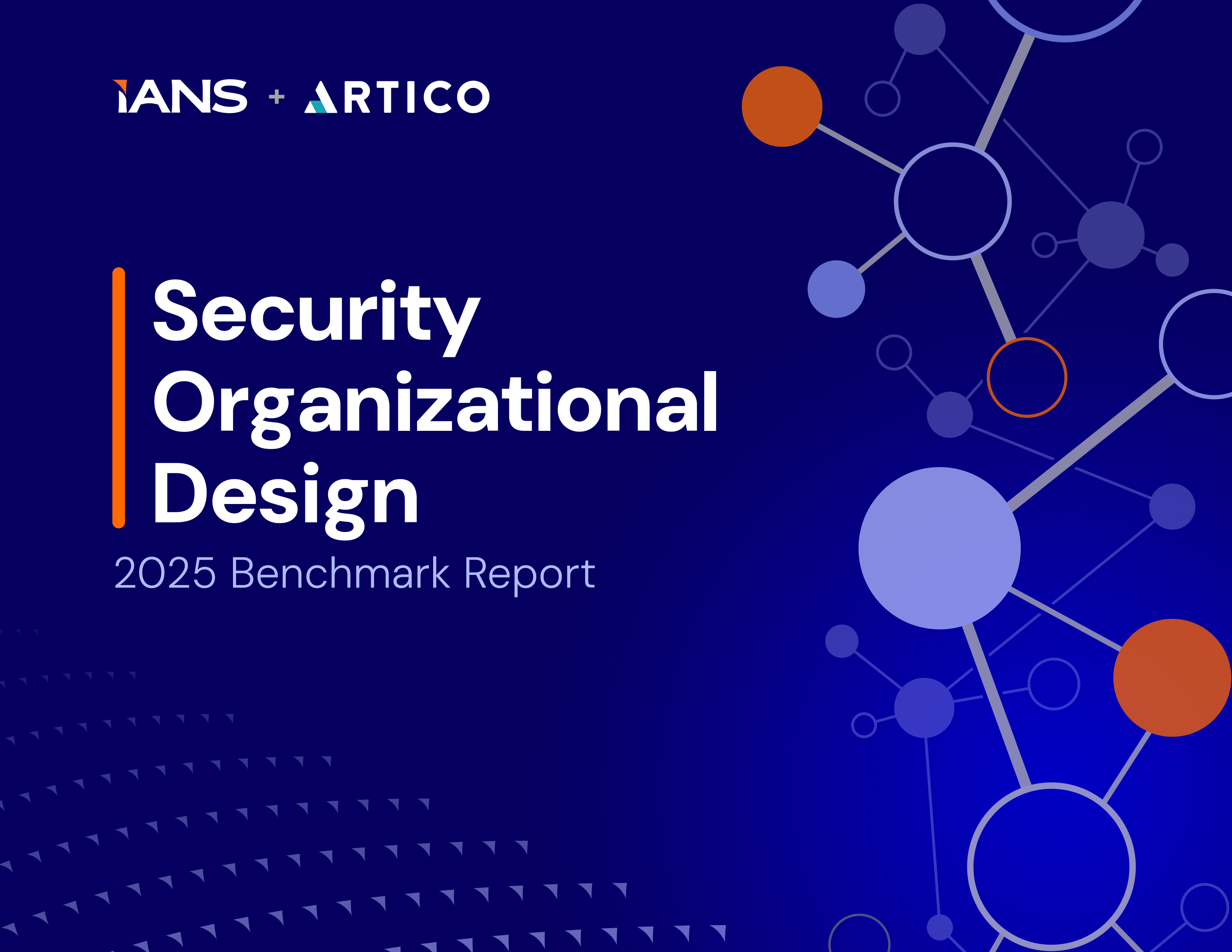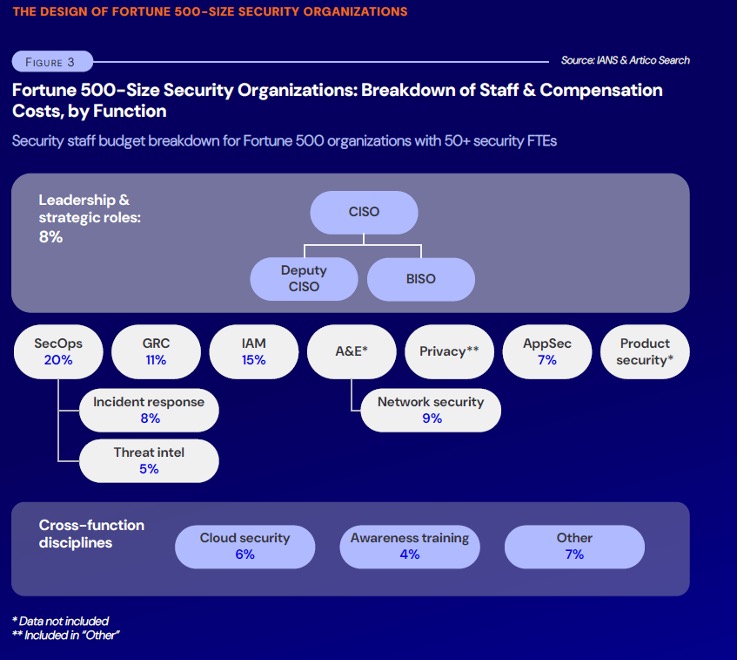
The Evolution of Security Organization Design: A Maturity Roadmap for CISOs
As cybersecurity threats get more sophisticated and regulatory requirements intensify, CISOs face a critical challenge: building security organizations that can scale effectively while maintaining operational excellence.
DOWNLOAD NOW: 2025 Security Organizational Design Benchmark Snapshot Report
The Security Organization Maturity Spectrum
Our research identifies three distinct organizational maturity levels that correlate strongly with company size and the composition of the security team. The findings draw on proprietary data from our annual benchmark surveys, including the CISO Compensation and Budget Study and the Security Staff Compensation and Career Survey, with a combined respondent count of approximately 1,500 CISOs and cybersecurity staff, and include expert perspectives from IANS research directors and Artico Search executives.
Midsize organizations (those with $50 million to $1 billion in revenue) typically operate with lean security teams of three to 15 full-time employees (FTEs). Large enterprises (generating $1 billion to $10 billion annually) employ security teams ranging from 15 to 49 FTEs. Fortune 500-size organizations (exceeding $7 billion in revenue) maintain security teams of 50 or more professionals.
For most organizations, staff and compensation costs represent the largest portion of their annual security budget—averaging 40% in Fortune 500-size organizations. A further breakdown of staff & compensation spending shows the largest allocation goes to the SecOps function, accounting for 20% of staff and compensation—rising to 33% when incident response and threat intelligence functions are included. This is followed by IAM (15%) and GRC (11%). Leadership and strategic roles represent 8% of total staffing costs.
READ MORE: What is the Ideal CISO Reporting Structure?
These mature Fortune-500 organizations feature four or more layers of leadership, with dedicated teams for specialized sub-functions including Security Operations, Governance Risk and Compliance, Identity and Access Management, and Architecture and Engineering. SecOps typically represents the largest functional investment at 20% of staff budget, followed by IAM (15%) and GRC (11%). (See Figure 3.)
Figure 3

As Steve Martano, an IANS research contributor, explains: "Though most CISOs at Fortune-level organizations have a layer of leadership between themselves and the CEO, the vast majority also have access with dotted line reporting to the CEO. CISOs report that even an informal reporting relationship ensures their messaging and perspective is heard without translation and provides air-cover for practitioners who can influence the CEO directly."
The Deputy CISO: Scaling Leadership Capacity
The emergence of the deputy CISO role marks a shift in organizational maturity. Among Fortune 500-sized organizations, 44% have implemented some form of deputy CISO arrangement—31% as a dedicated, full-time role and another 13% as a combined responsibility assigned to a functional department head. This role serves as the CISO's right hand, enabling workload distribution, providing succession planning, and delivering the operational capacity needed to manage increasingly complex security programs.
Partnering With External Experts
Mature security organizations also leverage managed security service providers (MSSPs). More than half of Fortune 500-size organizations utilize MSSPs for threat detection and response, incident response, endpoint protection, and network security monitoring.
READ MORE: How CISOs Are Using Platforms and MSSPs to Stretch Security Budgets
The journey to organizational maturity is about thoughtfully evolving your structure, developing specialized capabilities, and positioning security as a strategic business enabler. The data in our full report provides the benchmarks you need to make informed decisions about your security organization’s evolution.
Gain access to the 2025 Security Organizational Design Benchmark Snapshot Report. This snapshot report of Fortune-500-size security organizational design is a preview of the full 2025 Security Organizational Design Benchmark Report, which helps CISOs refine their cybersecurity organizations by showing how top Fortune 500, large, and midsize companies structure security teams, allocate budgets for staffing, and set compensation levels for various management and individual contributor roles. It includes insights on team design, leadership positions, and pay ranges broken out by three distinct revenue and staffing clusters: contact us now to request the full report.
You can also download our 2025 Security Software and Services Benchmark Report—and gain access to valuable insights and practical strategies for managing vendors and MSSPs, especially during periods of budget constraints.
Although reasonable efforts will be made to ensure the completeness and accuracy of the information contained in our blog posts, no liability can be accepted by IANS or our Faculty members for the results of any actions taken by individuals or firms in connection with such information, opinions, or advice.